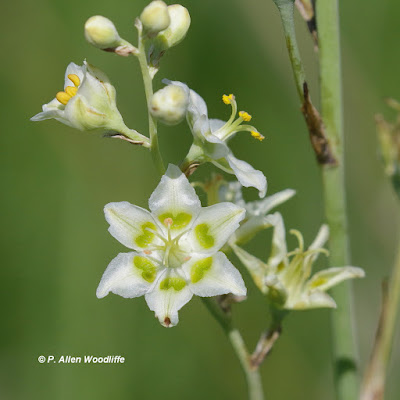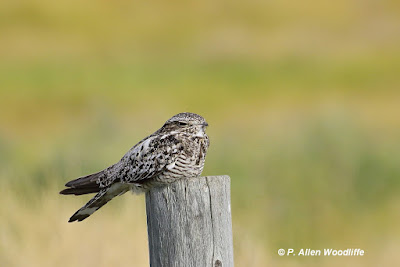There is too much to show and tell for a single blog post. This first post will portray some of the highlights from the roadsides in those prairie provinces.
It is partly true that the prairies are flat. Some areas are incredibly flat, and are where one finds remnants of tallgrass prairie, such as this site in the very southern part of Manitoba. It is part of the Aspen Parklands and Tallgrass Prairies near Tolstoi.
I had been here on one occasion, back in 1991, and seemed to recall that a lot of it was more open than what I was seeing on this trip. It was quite overgrown by comparison, at least if I was going by my recollection. This photo above is by far the most open of anything I saw on this preserve this time. There were a few of the typical tallgrass prairie plants, including Purple Prairie Clover....
....White Camas (which is attractive to the human eye, but quite poisonous to livestock).
Wood Lily. The 'Western' Wood Lily is the provincial flower of Saskatchewan, but it is the same species as the one found in Ontario: Lilium philadelphicum.
This next one is the yellow form of Indian Paintbrush. The red form is sometimes abundant on more southern tallgrass prairies that I have seen in places like Missouri.
We saw a few butterflies, but it was too hot for a lot of butterfly activity. I was hoping for a Poweshiek Skipper, a very rare species found on these Manitoba tallgrass prairies, but I was not successful.
 |
| Meadow Fritillary |
A bit farther north, we came across these colourful wildflowers, which is a different species of Indian Paintbrush.
Wildlife different from what we are used to here in southwestern Ontario was fun to search out. Richardson's Ground Squirrels, locally known as gophers, were plentiful, and often fairly cooperative.
We got a fleeting look at a White-tailed Jackrabbit. It is similar in size and shape to the European Jackrabbit of southern Ontario.
We saw a few Pronghorn.....
....and a few more Mule Deer.
We did see a few bears in various places.....three altogether and all in Alberta north of Edmonton, but we never saw Goldilocks :-). They were scooting across the road pretty quickly and only got photos of this one bear. Thankfully Marie had her cell phone handy.
A nice variety of birds was noted even along the road way.
 |
| Western Kingbird |
 |
| Interior form of Horned Lark |
 |
| Lark Bunting |
Black-billed Magpies are widespread. They can be seen scavenging along the road when the opportunity arises (this next photo is one I took on a trip in the fall of 2007)....
Although some parts of the prairies are flat, in reality most of it is anything but flat. There are some impressive sand dunes, which we had to bypass on this trip. But the various river valleys made for an enticing landscape.
In some of these river valleys dams were built to create small recreational lakes. While their main intent was water control and recreation, some of the native fauna was able to make good use of them as well. We didn't see a lot of these American White Pelicans, but a few scattered about.
By comparison, Franklin's Gulls were fairly abundant.
The next post will deal with one of the iconic features of the prairies: swales and potholes.























No comments:
Post a Comment